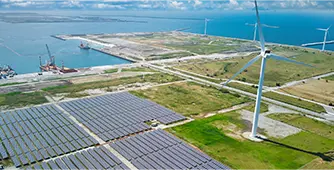strength
In 1990, Ultex has been established as laboratory to develop [metal bonding technology] and [soldering technology] from physical thinking. From then on, Ultex focused on research and development of bonding and soldering technology for 30 years. The research result over the years is completion of 「SoundPower for Space」bonding theory as fundamental technology of metal bonding.
Degree of completeness in utilization technology of Sound was improved by SPS bonding theory.

Furthermore, we spread this new major method as a genuine fundamental technology which is essential for “manufacturing” by expanding the field from「Ultrasionic」technology to 「Sound」technology more and more in the future.
And based on theoretical evidence constantly, we develop the innovative technology to achieve 0% for defective rate in mass production and reduce production cost as (zero) as possible and we lead the world by making history of sound energy.
At the time of establishing Ultex in 1990, [The Policy 1990] is pursuit to [spread ultrasonic technology] in field of 「metal bonding and soldering」 as the solution method for [environmental problems and energy problems].
Ultex developed the bonding technology of [soldering parts as non-ferrous metal, Steel, High Tensile Strength Steel]. Currently in Ultex, development of [bonding of big applications][bonding of different materials] [3D bonding] and more are progressing.
Furthermore, we continue to support in filed of superconductivity and fuel battery.
Ultex’s mission of revolutionary technology “SoundPower” has contributed to decarbonized society since 1990.
Ultex supported mass production of
Thought of [Simple Easy Processing] which pursues simple and concise as much as possible proves completeness of Ultex’s technology which led the achievement of
The use of sound energy has advanced in high-tech fields such as electrical and electronics, semiconductors, and lithium-ion batteries.
Now, new markets can be created by utilizing Altek's advanced sound energy technology in new fields such as infrastructure, electric power, defense, superconductivity, and electrification in Japan's heavy industry.
The use of this technology has been limited to joining light metals such as gold, silver, copper, and aluminum, but now it can be used to join heavy metals such as steel, ceramics, and superconductors, as well as different types of materials.





Contact